Ranger. Most of us probably think of the famous lawmen whose history goes back to the Wild West. But we can also see rangers as protectors of endangered wildlife in national parks and natural areas around the world. In short, the ranger combines many activities and qualities that a ranger must master and possess. So it's probably not too surprising when one of the first bikepacking companies, Revelate Designs, named one of their most famous frame panniers the Ranger. But is the Ranger frame bag from Revelate Designs really the kind of tough guy that can handle and survive it all like a real ranger?
Kyrgyz rangers work away from the film spotlight in the most remote mountain areas of the country.
Source: https://snowleopard.org/
Dimensions and materials
Let’s start with the dimensions of the Ranger frame bag in size M (marked MD by the manufacturer), which I’ve been riding for a little over a year, so it’s been through a lot. Although you can find the dimensions of the pannier on the manufacturer’s website, I preferred to measure it.
The length of the frame bag (A) is 18 inches (46 cm) at the upper frame tube, the length of the front part (B) is 1,3 inches (3,2 cm), the length along the lower frame tube (C) is 18 inches (46 cm), followed by a radius that bends the bag towards the seat tube. The length of this part (D) is 3,7 inches (9,5 cm). The length along the seat tube (E) is exactly 9,8 inches (25 cm). The manufacturer therefore slightly underestimates the dimensions – the frame bag is a hair bigger as a result. But probably the most interesting dimension is the width of the bag, which is variable. This is what makes this bag very exclusive and cleverly increases its overall capacity.
At the narrowest point along the seat tube the bag is 2,8 inches (7 cm) wide. At the widest point at the front of the bag, it is already 4,7 inches (12 cm) wide. Thus, the frame bag gradually widens from the saddle towards the handlebars, nothing gets in the way when pedaling and, on the contrary, in the front part of the frame bag near the head tube there is a possibility to use the space to the side. So far I haven’t found a manufacturer that offers a similar solution, and that’s a bit of a shame, because this concept is, in my opinion, excellent and functional. In the photos below you can see what I have in mind.
We’ll talk more about what all fits into a bag designed like this later, as other interesting innovations affect it. Before we get to them, it’s good to know that the manufacturer has simplified the selection of the right size of the bag by placing print templates of all manufactured sizes directly on their website. The way I went about making my selection was to download the templates, print them out, cut and glue them together. I then tested the size I needed in my bike frame and finally ordered the size that suited me.
The photos certainly already suggest that the Ranger has one of the most massive zippers I’ve encountered in a pannier yet, compared to the competition. Fortunately, this is not just some fashion fad, but a well thought out solution.
The reason the manufacturer used a No. 10 molded tooth zipper with urethane tape is to make it more resistant to dirt and sprinkles that destroy more commonly used waterproof zippers. This does happen. Another good reason may be the winter months, when one’s hands are usually cramped and the more robust zipper is easier to handle. I can confirm this from my own experience
In any case, Revelate Design has left nothing to chance, because the area around the zipper has been improved with elastic panels that can “blow” the bag, so to speak. The elastic fabric is nothing more than a stretchable strip of Cordura material into which the zipper is sewn. This solution reduces the strain on the zipper when closing the bag and also extends the life of the entire bag. In the picture below you can see the patterned satchel. I can’t count on one hand the number of times I’ve mentally thanked the manufacturers for once again managing to cram the uncrampable into the bag.
Most of the outer shell of the bag is made of the time-tested X-PAC material in the VX-21 variant. It is good that the manufacturer used this variant, because it has the best weight to durability ratio. The weight of the material is around 7.2 oz / yd². This material is also used for the ridge of the bag (along the top frame tube). On the other hand, a ballistic, highly abrasion-resistant nylon (1050 Denier Ballistic Nylon) is used along the seat tube and lower frame tube. The reason for this is that the bag is much more loaded and stressed in these areas. The material here must be able to withstand the weight of the load, but also the splashing mud and abrasive materials that stick between the frame and the bag. In the pictures you can see where X-PAC is used and where ballistic nylon is used. Also, in the photos below you can see the two corner covering leggings that cover the zipper slider. On the right side of the bag, the cover flap is supplemented by another hole, which is used to bring out the hose from the water reservoir. Ravelate Design also kept this little detail in mind.
Internal arrangement
If we look inside the frame bag, we immediately notice that most of the interior space has a sewn-in lining as an additional layer of protection in the form of red durable 420 nylon with a diamond ripstop finish against tears. In the images below you can take a look at everything.
The Ranger has two separate storage compartments. The larger, main compartment has a capacity of 243,46 fl oz (7,2 L). However, thanks to the robust zipper and flexible panels, this volume is easily surpassed.
In addition, the manufacturer has added a partition, which can fortunately be disassembled. The divider consists of two separate wings, each of which is sewn to one of the sides of the bag and connected in the middle by Velcro. And why did I write that it can “fortunately be disassembled”? Because I don’t use this partition much myself. I have found through practice that it rather complicates my life. I usually need to stuff the Ranger properly and every obstacle in the way is a bit of a problem. I understand that the bulkhead is probably dual-purpose. The first is to try to prevent the bag from bulging in the leg area, and the second is to be able to split the load. However, the former does happen in this part of the pannier, but it’s never so bad that it prevents me from moving my feet while pedaling. I personally don’t need the latter.
In the main compartment along the upper frame tube we can still find velcro straps for attaching larger pumps or tent poles. Again, I use these handles very little as they also make filling the bag rather difficult. Most of the time I put the pump in last and the loops are not even needed anymore, because I have to stuff the pump inside, so it just holds itself.
The last interesting thing inside is a small mesh pocket. I use this one a lot because it fits the power bank perfectly.
And finally there’s a tiny pocket with a similar, albeit tinier zipper on the right side of the bag. This pocket can hold at most a map, tissues, cutlery, matches, chocolate or the now indispensable drape. In short, something flat enough or flushable.
Finally, it’s worth mentioning that the perimeter panel of the pannier frame is filled with padding to help the pannier hold its shape and keep your cargo from rattling against the bike tubes.
Most common cargo:
- 1x powerbank.
- 1x bike lock.
- 1x compact cooking set 985 ml Esbit CS985HA (pot, saucepan, alcohol cooker).
- 1x foldable Sea To Summit X-Cup 250 ml (sometimes I also take a Sea To Summit X-Bowl 650 ml).
- 1x mini petcock with alcohol 250 ml.
- 1x bike tools (mounting tools, Parktool IB-2 multi wrench, spare tubeless valves…).
- 1x Lezyne Micro Floor Drive HP or Lezyne CNC Tubeless Drive.
- Tubeless tire repair kit including 250 ml latex milk.
- 6 pcs of tent pegs.
- 1x FISKARS Xtract SW73 hand saw
- Hammock rigging.
- Toilet scoop and toilet paper.
- Various bits and bobs for the gaps depending on the situation.
Attaching the bag to the frame
It’s fair to say that the Ranger is well equipped with frame mounting options. A wide velcro panel, located at the top of the bag, serves as the base of the attachment. It is a very good solution. You simply start with this attachment and the bag basically sits in place immediately and hardly moves. Then you just add and tighten the next attachment and the bag gradually becomes fully fixed. So in addition to the wide panel, the bag has separate velcro straps with lining that are used to thread through the eyelets at the bottom of the bag. I will point out that the linings are made of a material that tends to tear. You can see a specific case in my palm. I recommend replacing with others, or making your own DIY versions. The whole problem has to do with the small thickness of the material, as there is a similar smaller velcro strip on the back near the seat tube also with a lining, but already made of thicker material, and it doesn’t tear anymore. On the top of the bag we can find a “plastic” looking belt with a buckle, which fixes the bag to the head tube. This is mainly used to prevent the loaded pannier from sliding towards the centre of the frame.
Is Ranger a ranger?
As far as I’m concerned, I’d say yes. Quite frankly, you’ll be hard pressed to find a better bag, and you’ll get over the few minuses, because you can find minuses in all products from all sorts of manufacturers. I’ve never had a leak in the whole time I’ve been riding in the rain all the way to Kumburk. It has survived a winter trip with me in the Brdy Mountains at minus ten and experienced forty-degree heat during a SwiftCampout trip. In short, I can count on him.
- Cleverly combined quality materials
- Massive, non-clogging zipper
- Flexible panels around the zipper – feeling like a “bottomless” bag
- Ample 7.2 L (M) capacity
- Well-designed space. Increase the volume of the bag
- Additional inner lining
- Padding in the perimeter frame of the bag
- Sufficient number of tie-downs and grommets
- Low weight
- Traditional design (rather subjective impression)
- Higher price
- Too weak padding on velcro straps
- Missing full-length zipper cover (I personally don’t miss it, but some might be bothered by it)

Price
149 EUR

Weight
0.76 Pounds (M)

Dimensions
243,46 fl oz (7,2 L)

Material
VX21, 1050 DB Nylon
 0.76 Pounds (M)
0.76 Pounds (M) 243,46 fl oz (7,2 L)
243,46 fl oz (7,2 L) VX21, 1050 DB Nylon
VX21, 1050 DB Nylon

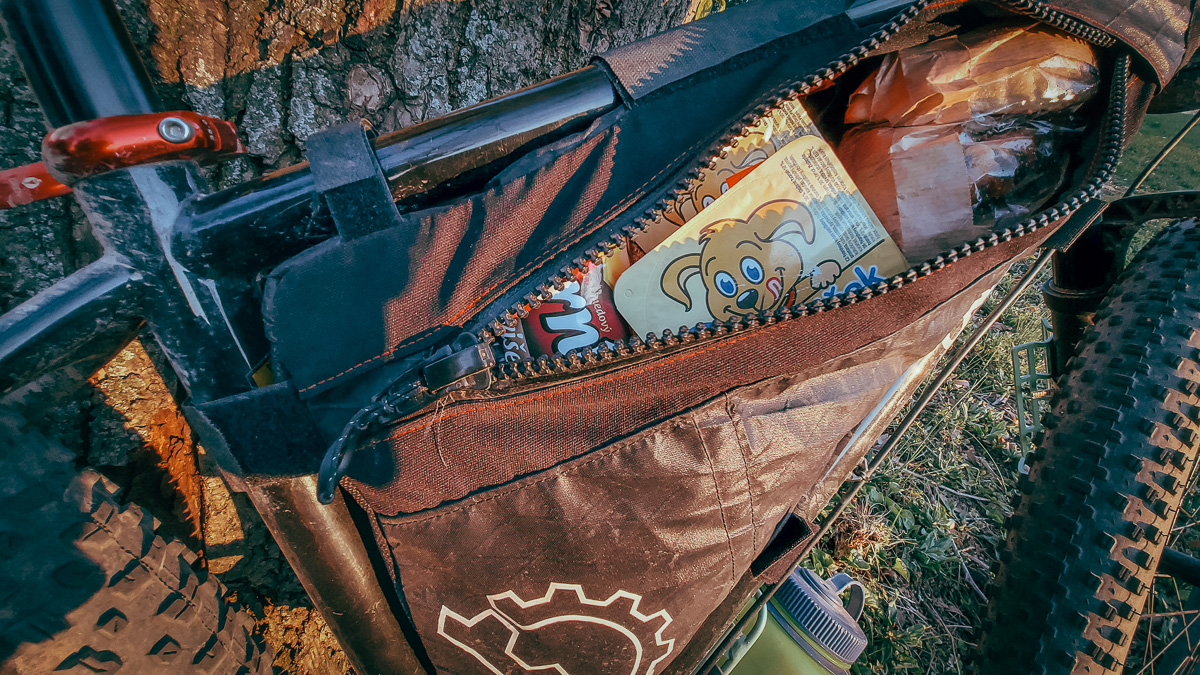
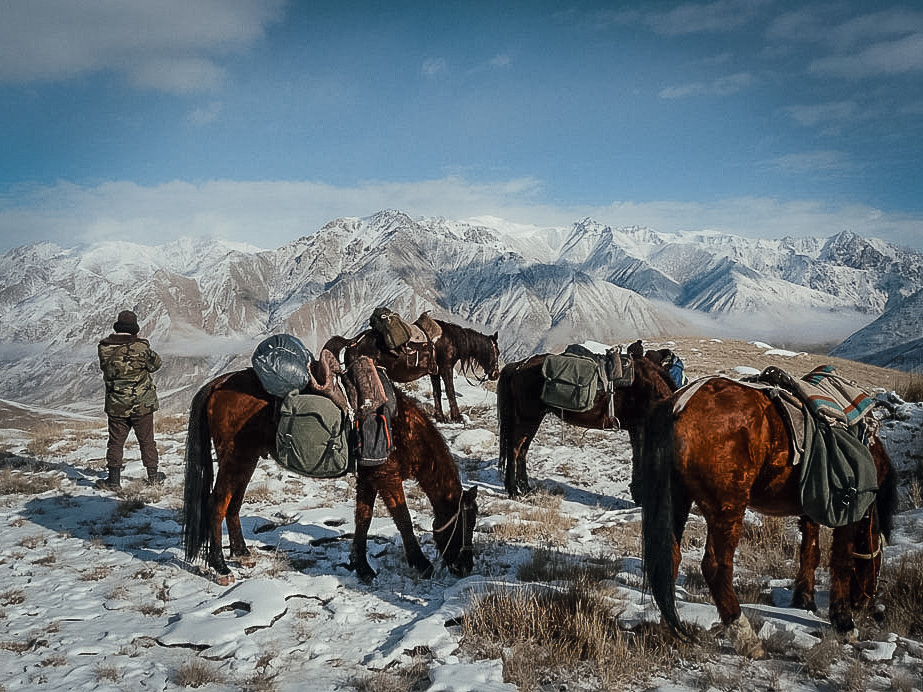
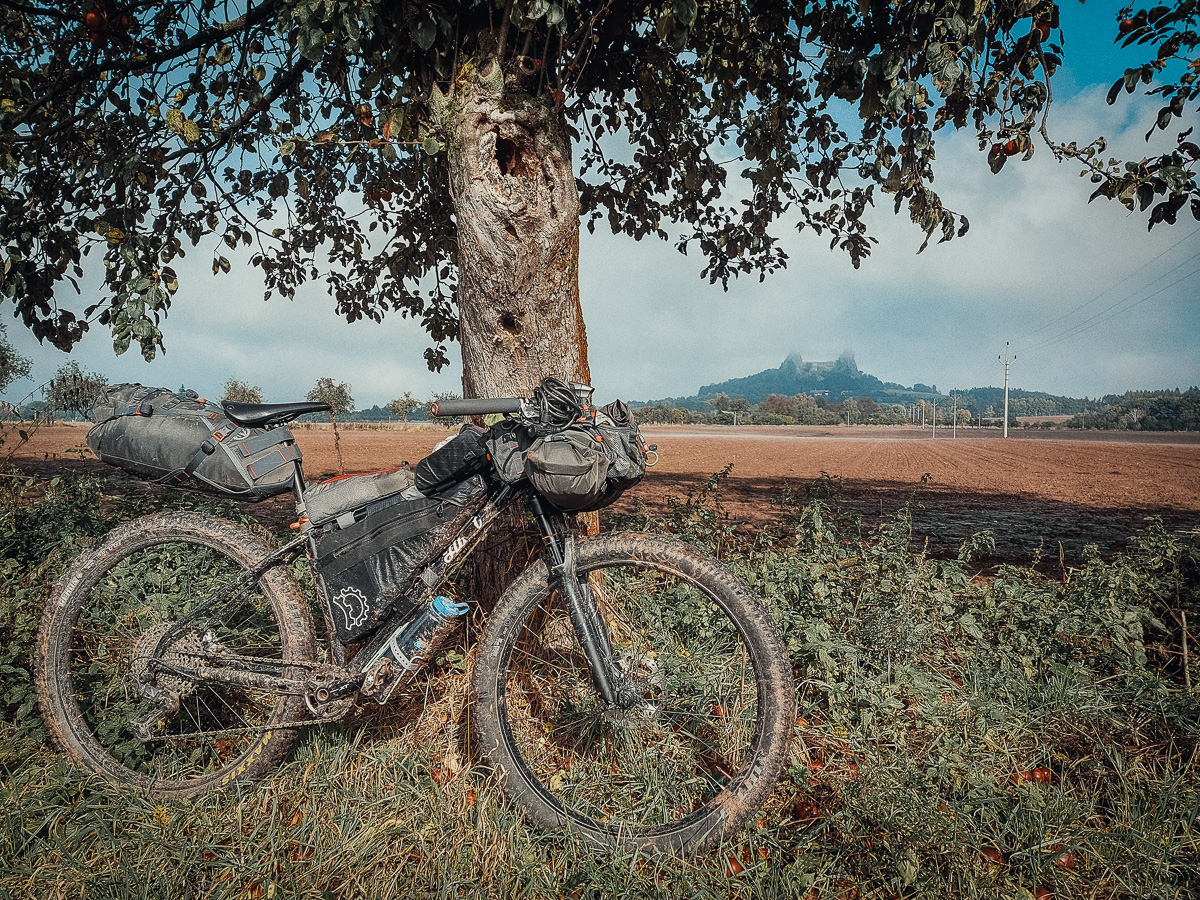
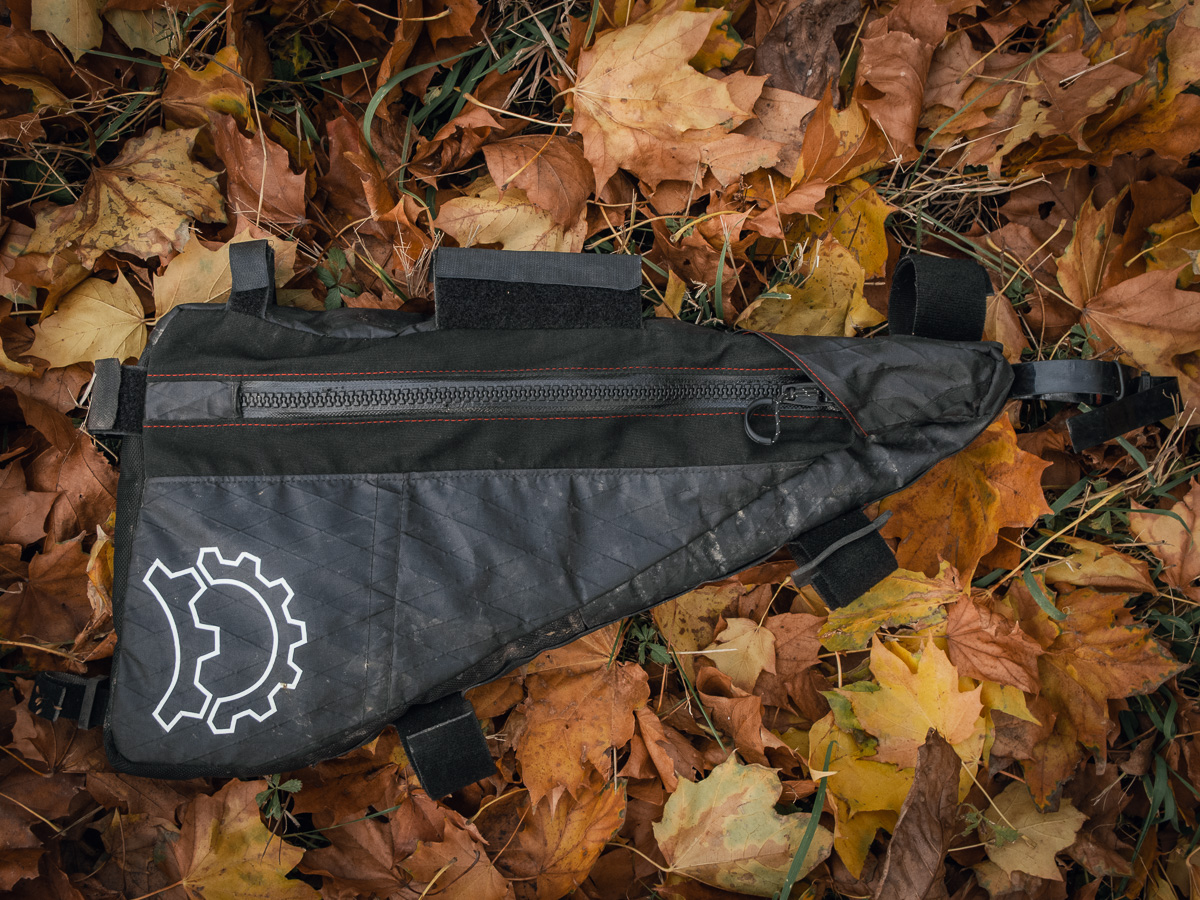
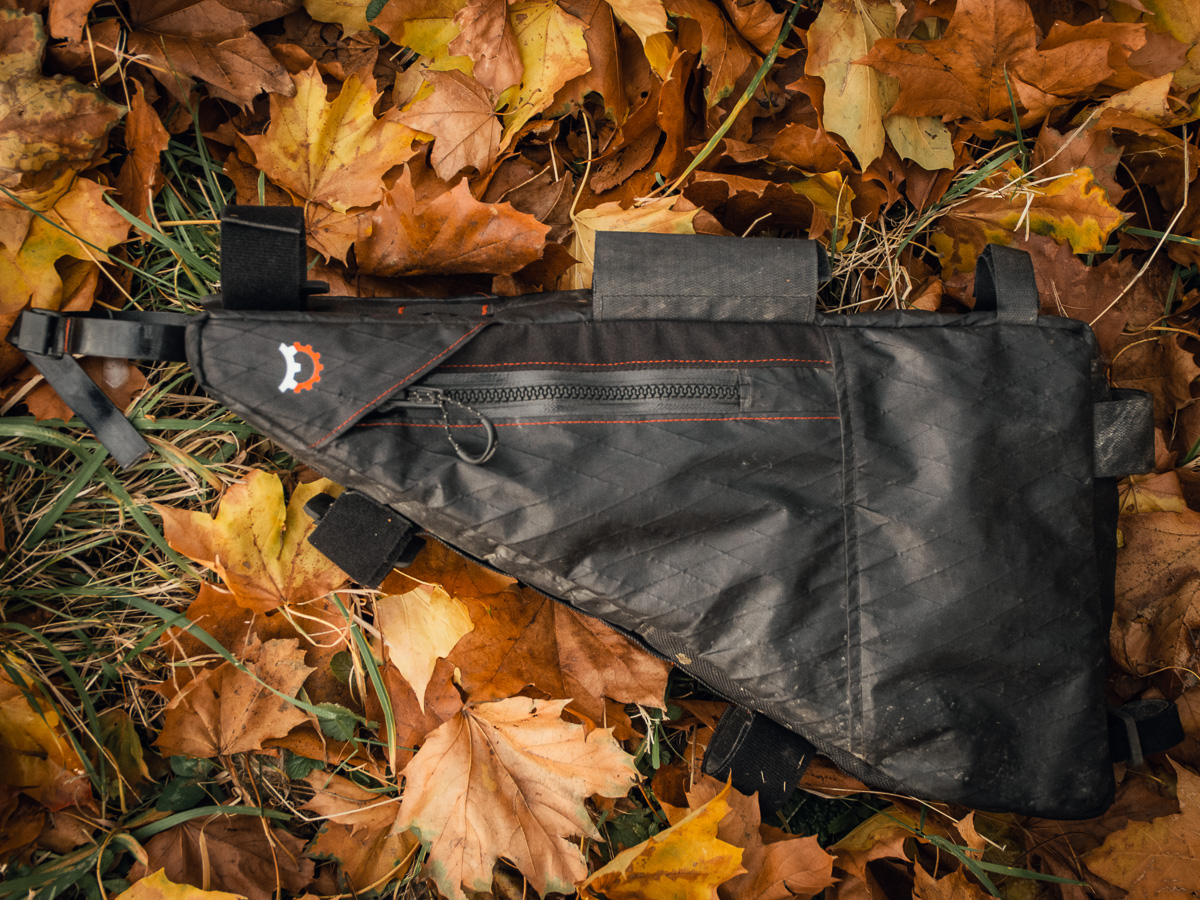
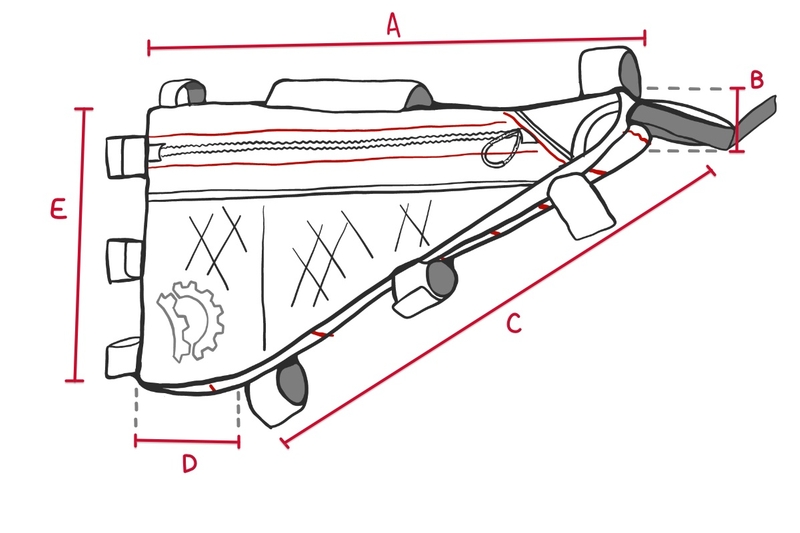
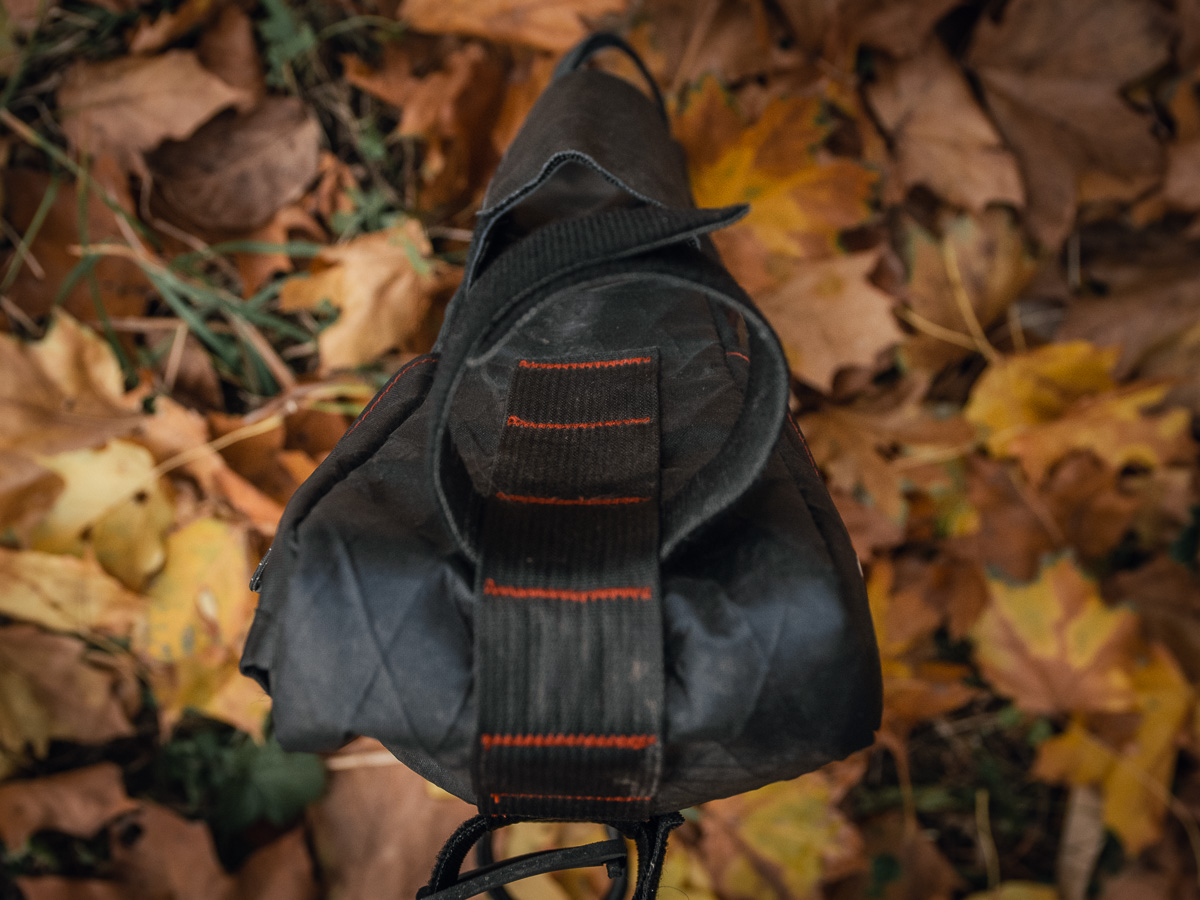
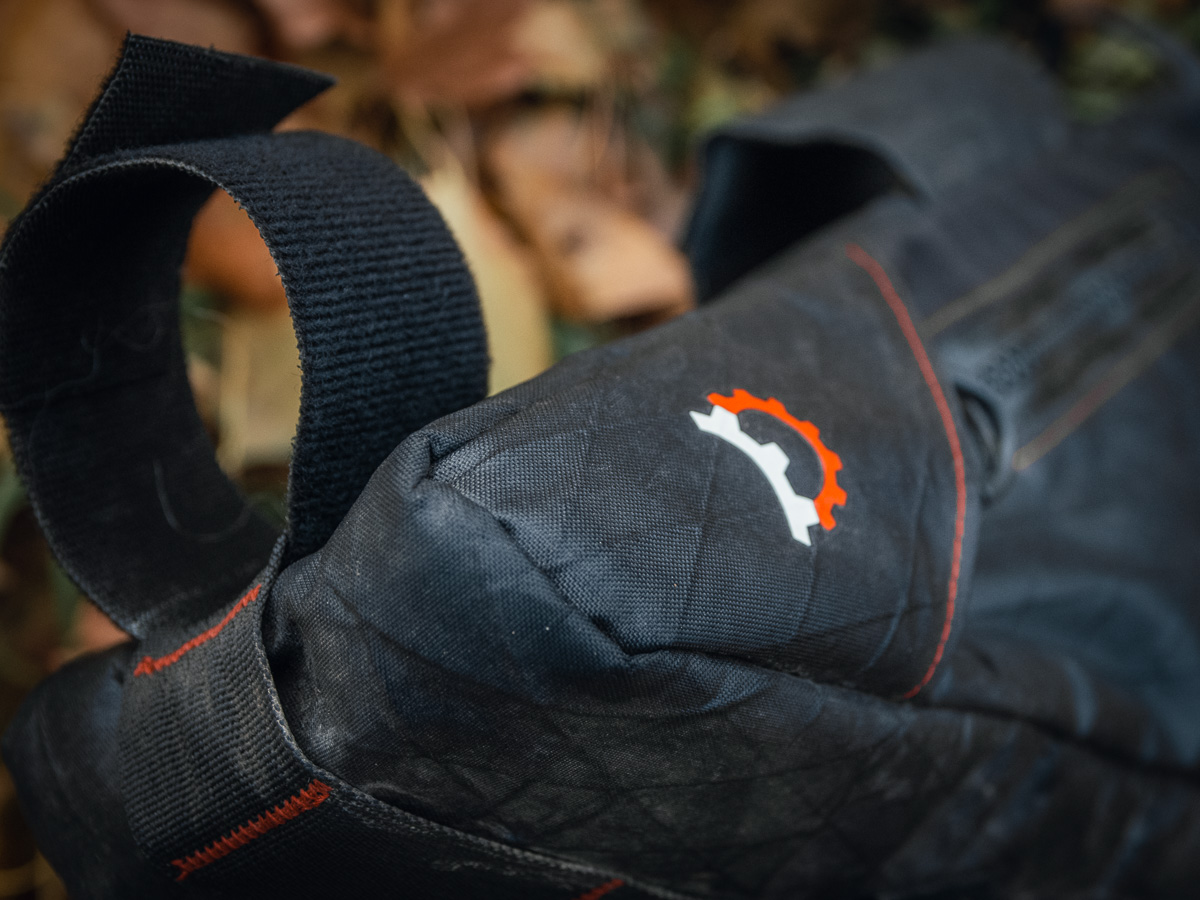
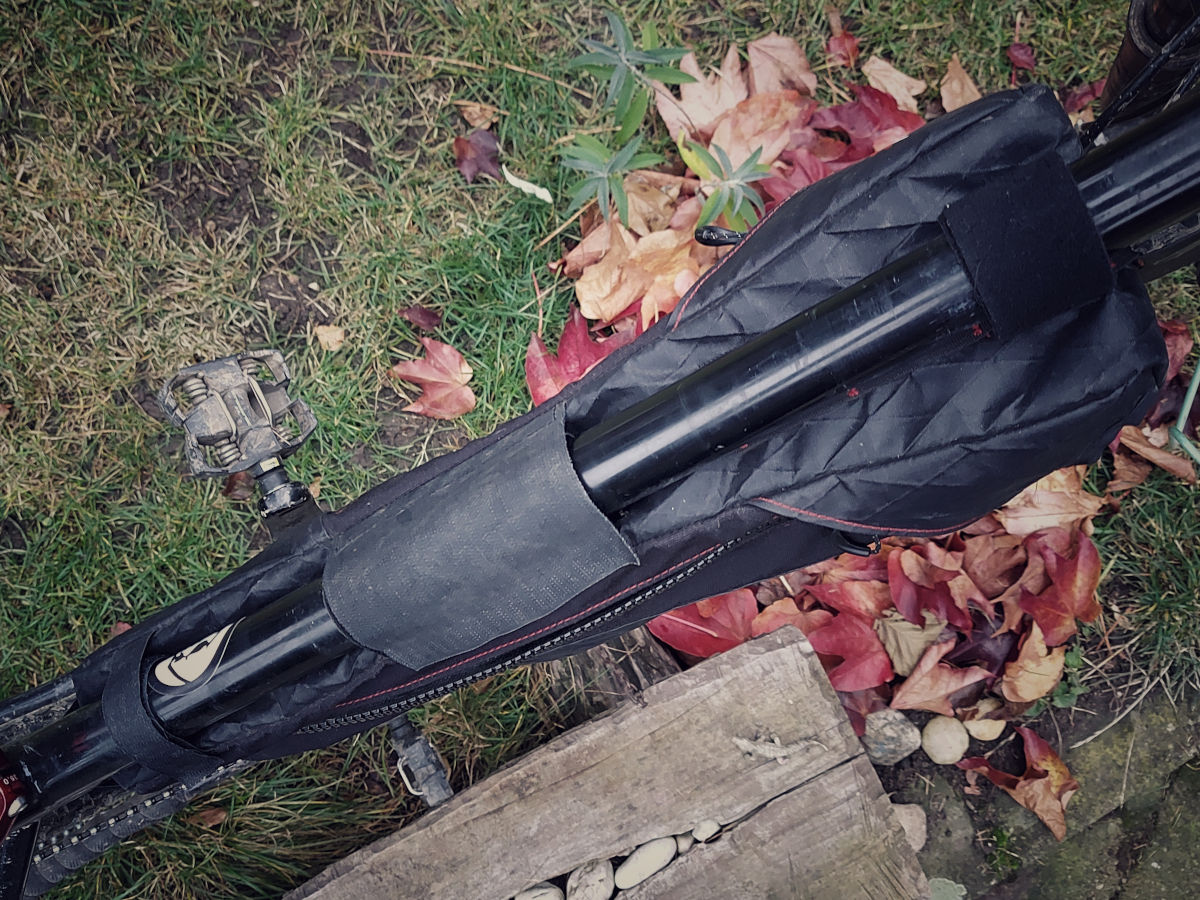
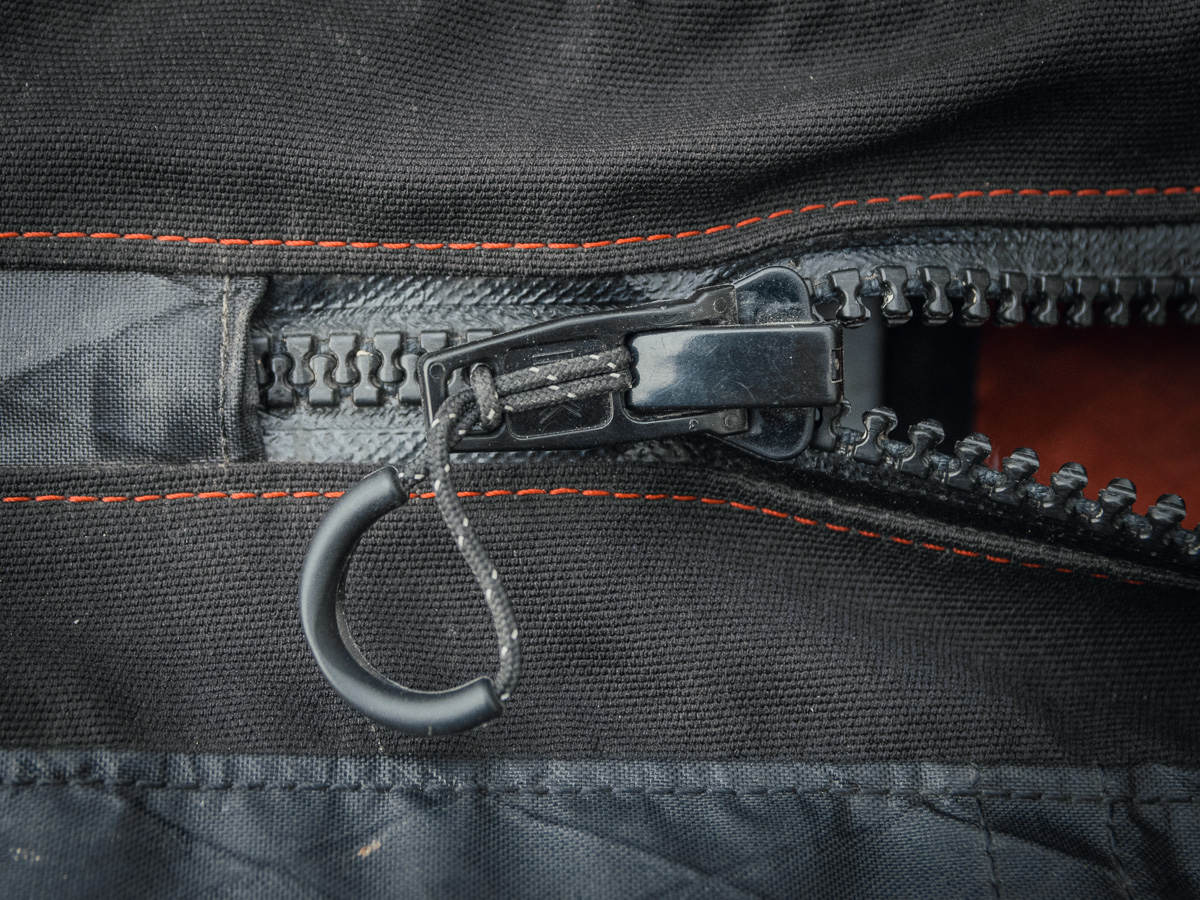
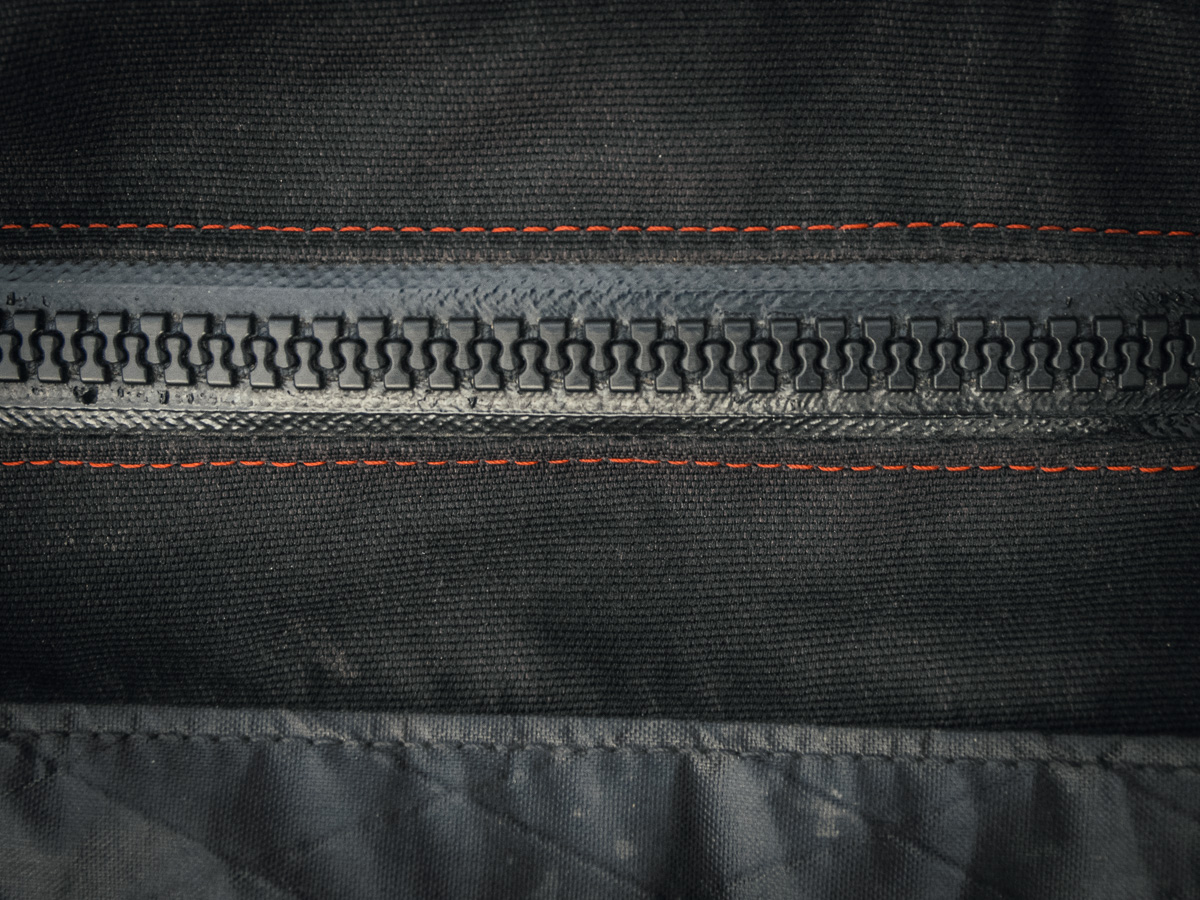
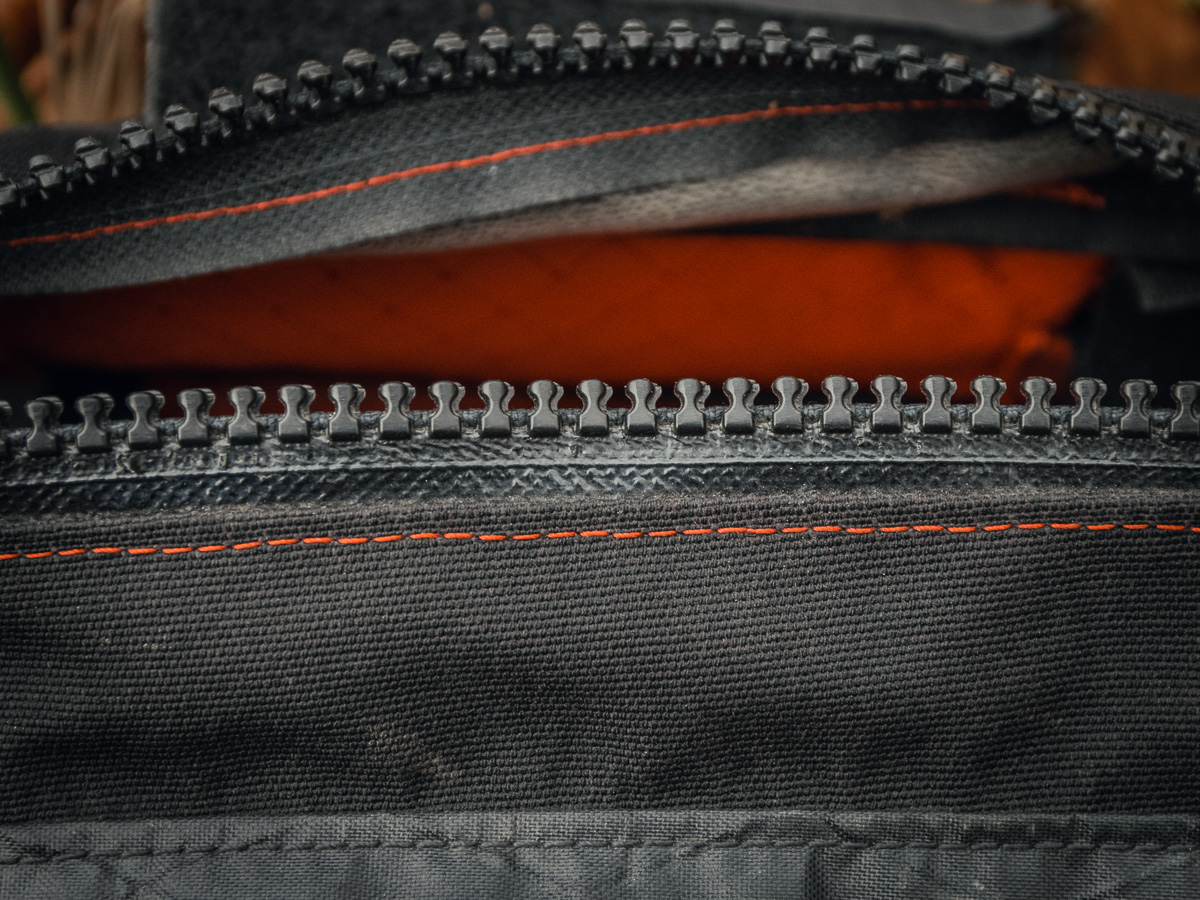
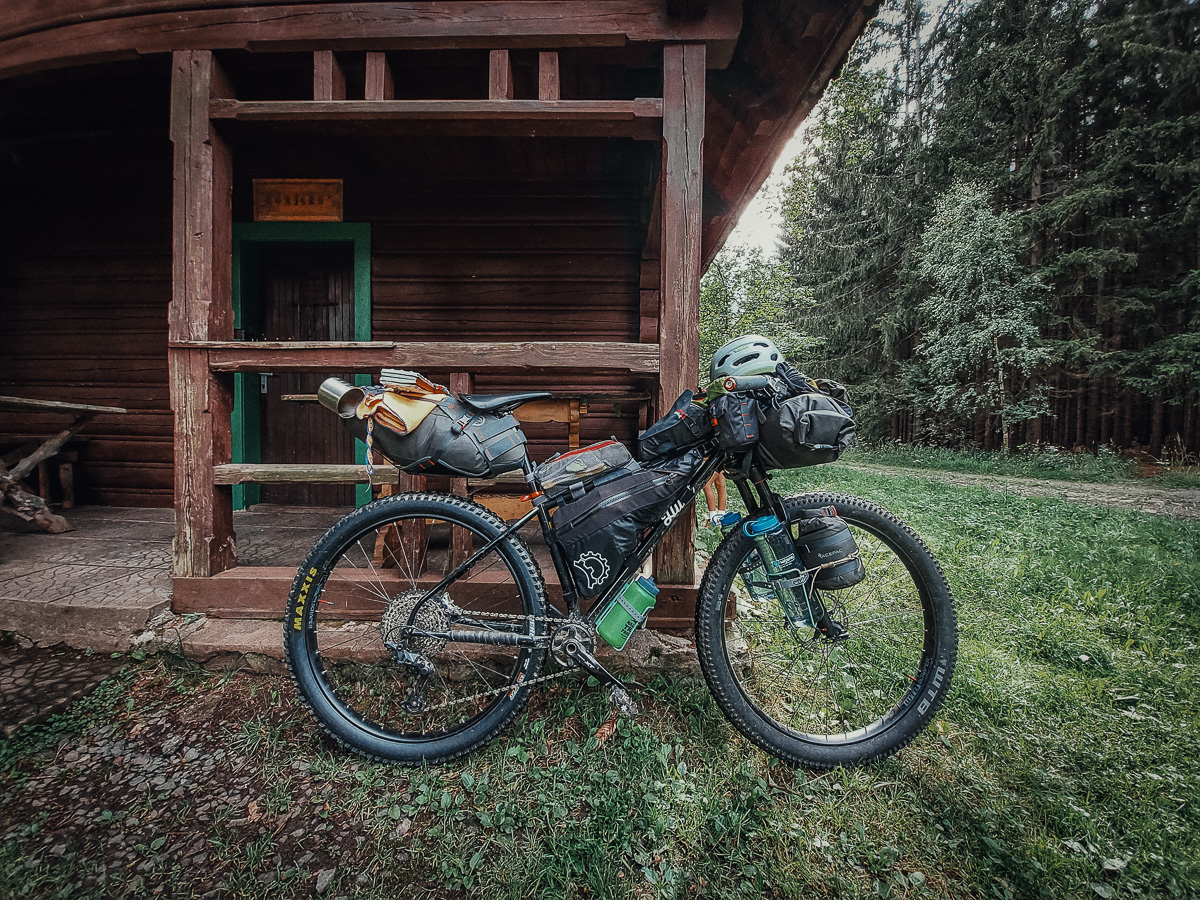
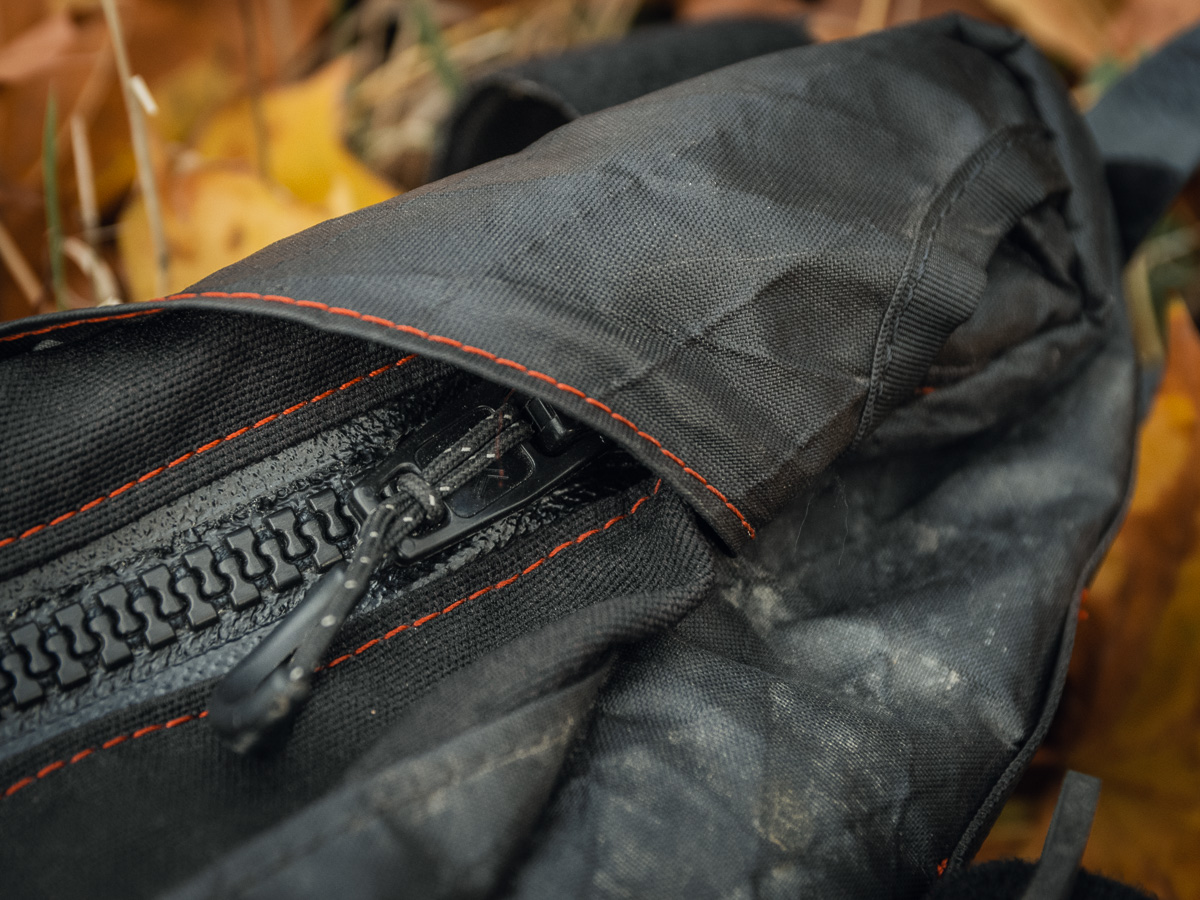
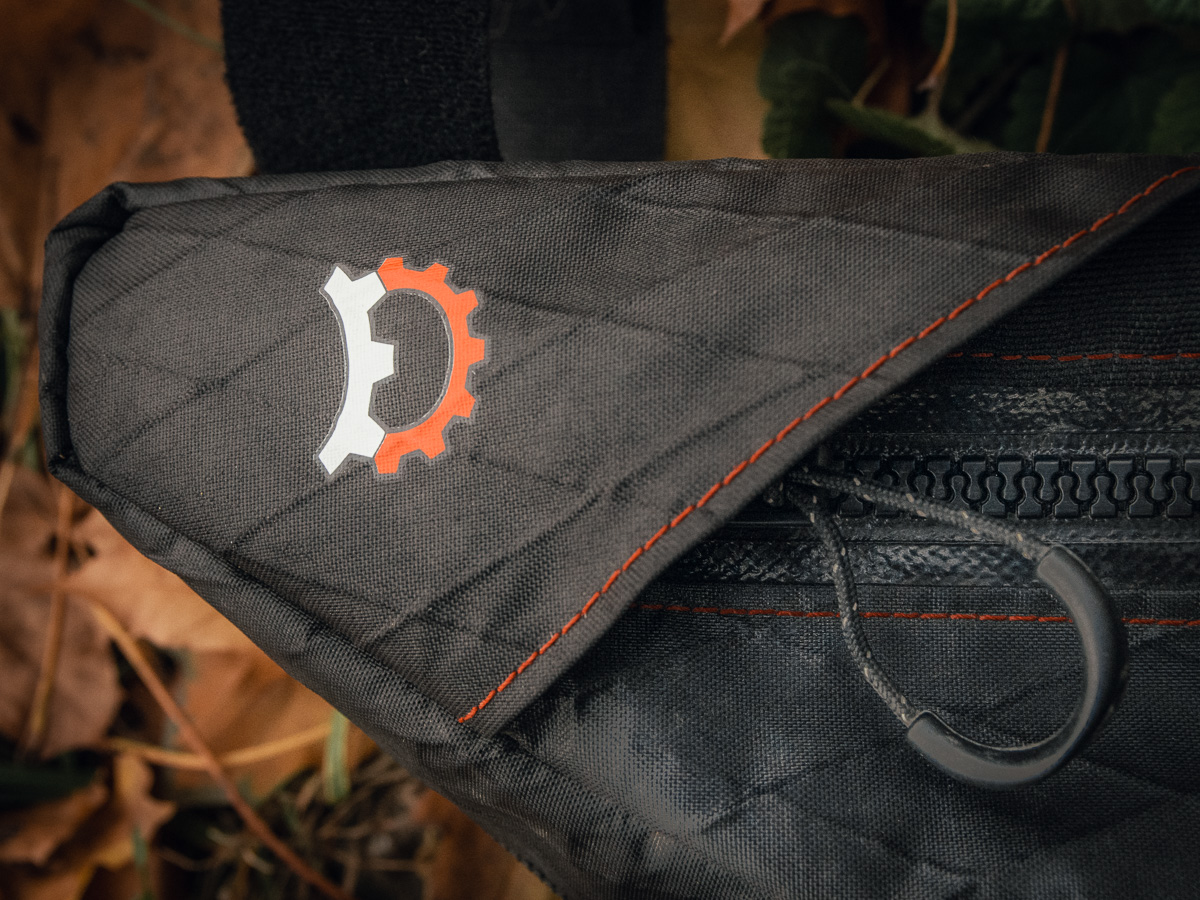
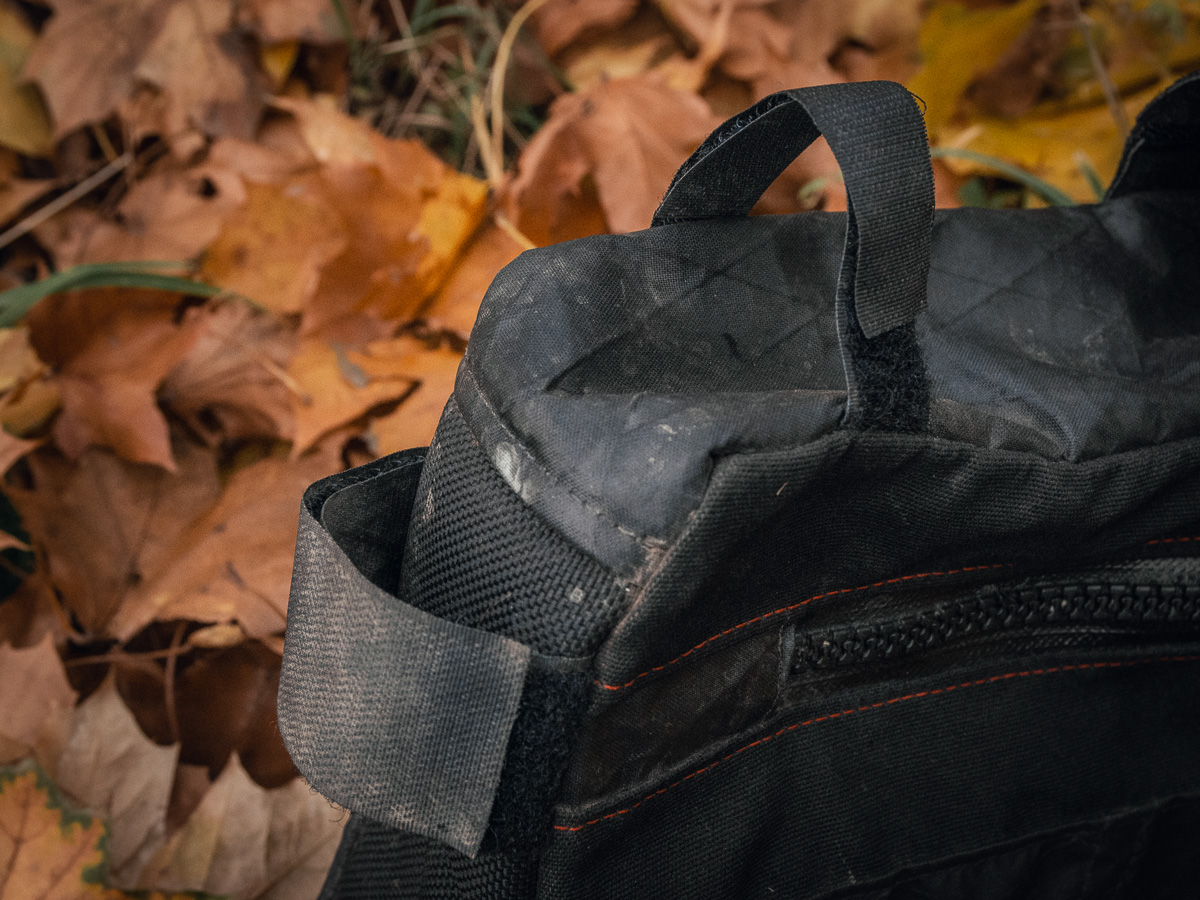
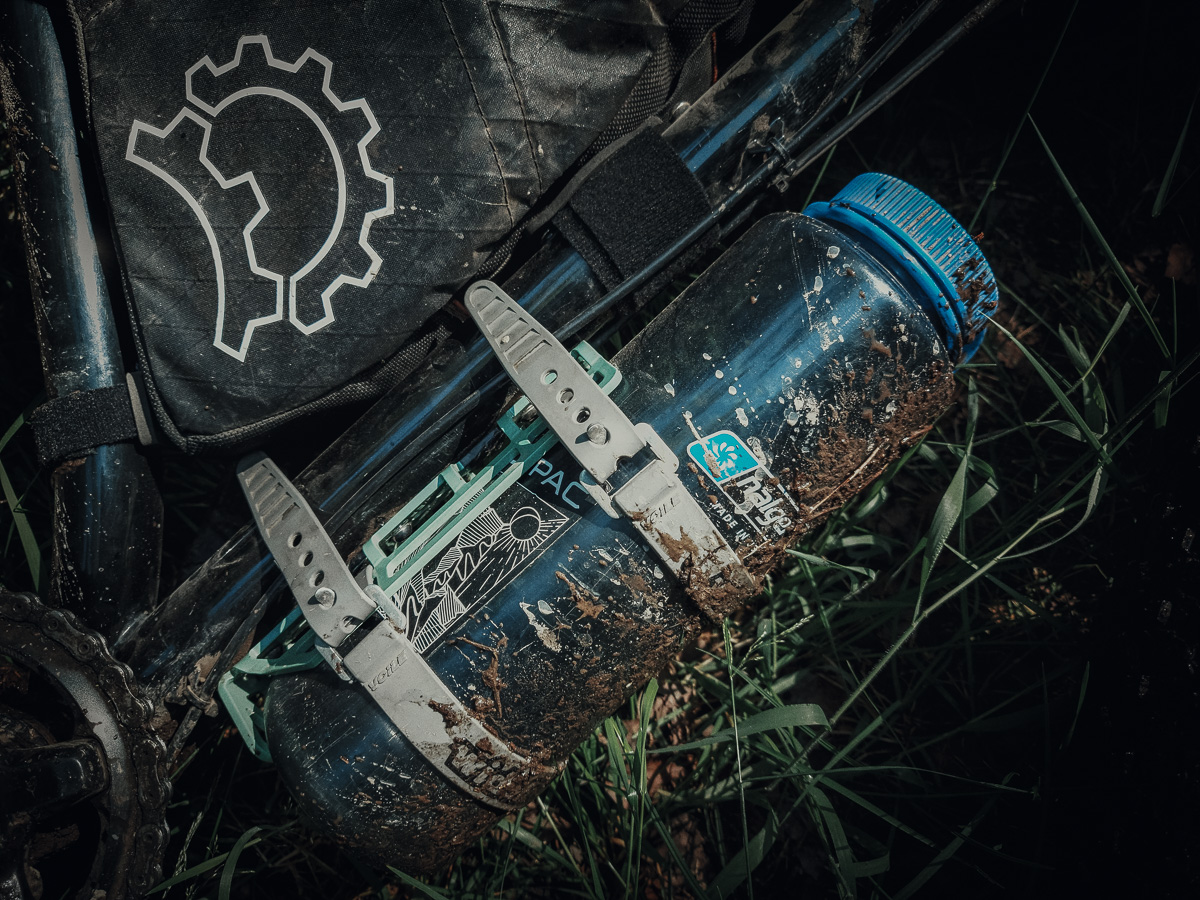
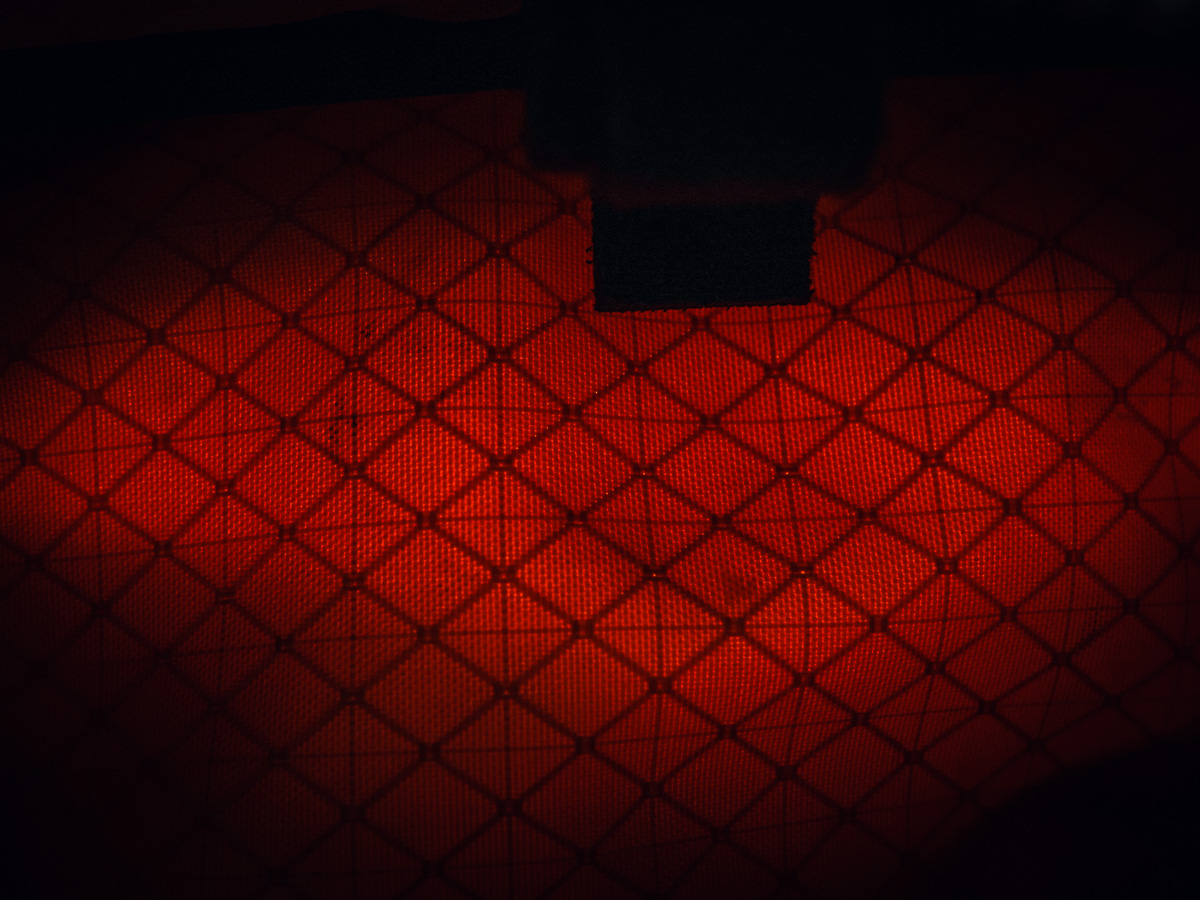
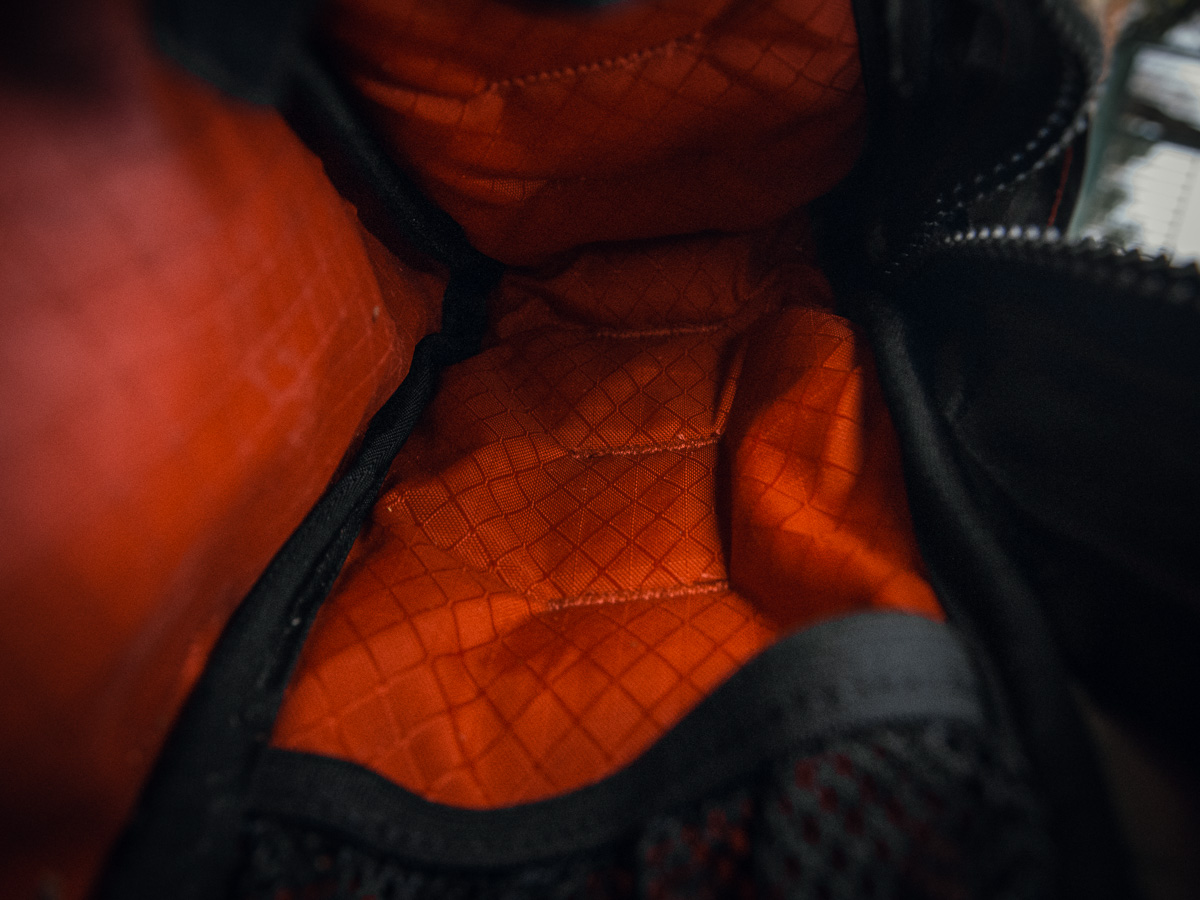
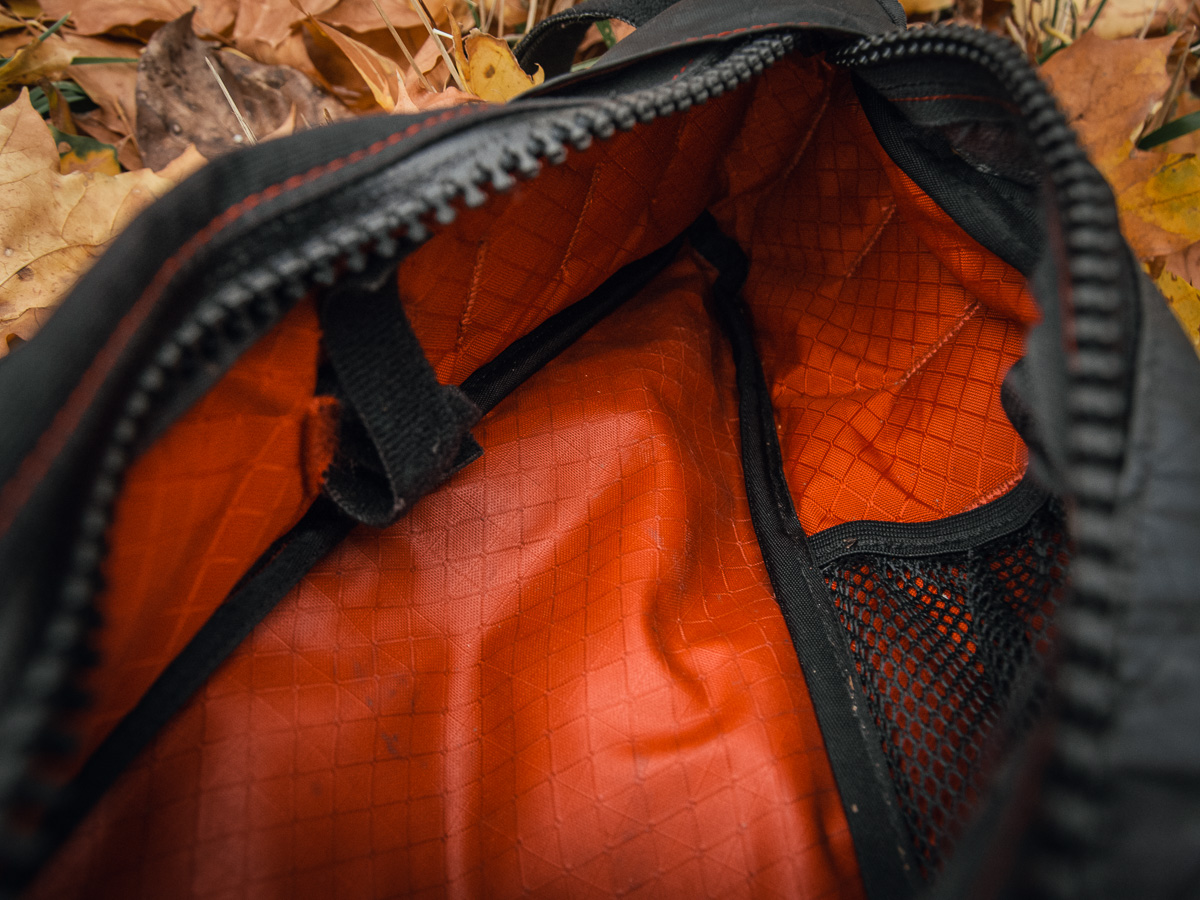
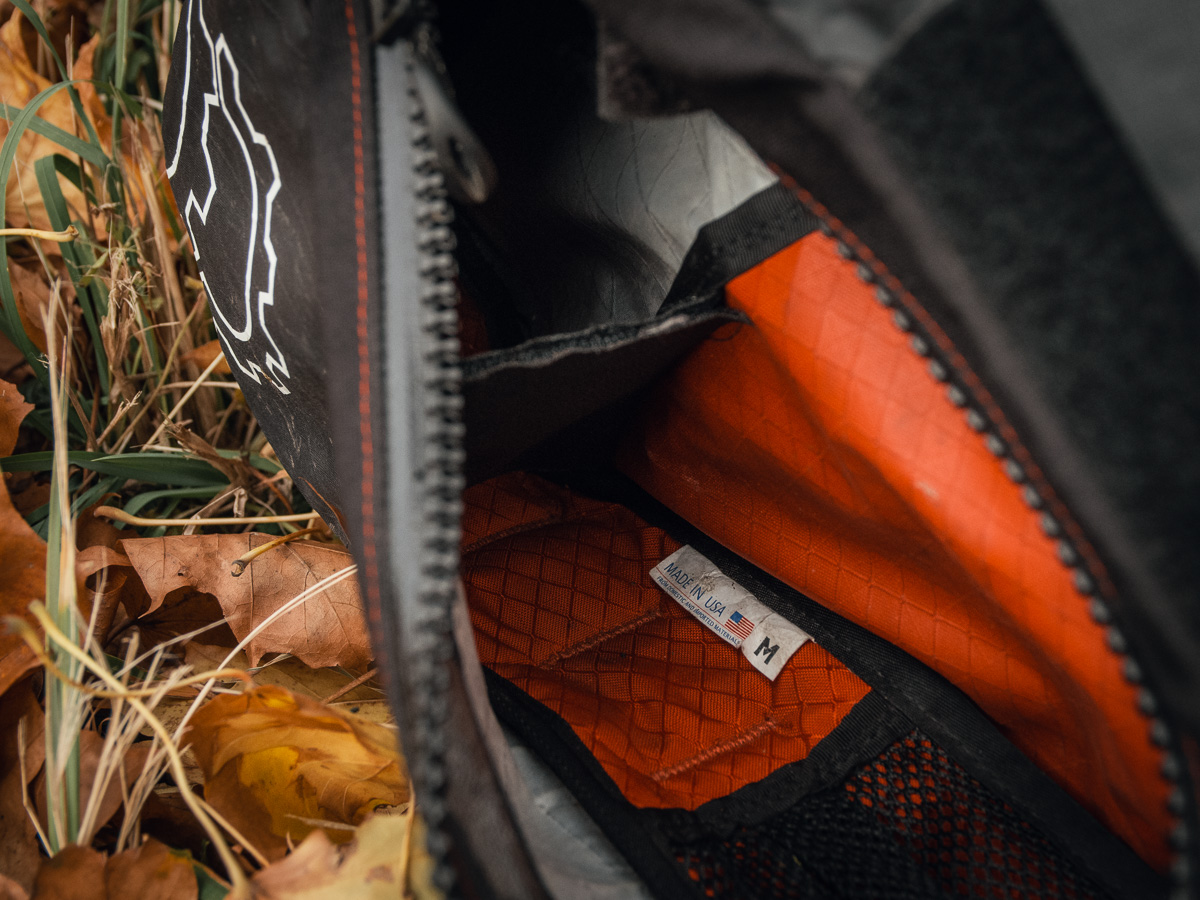
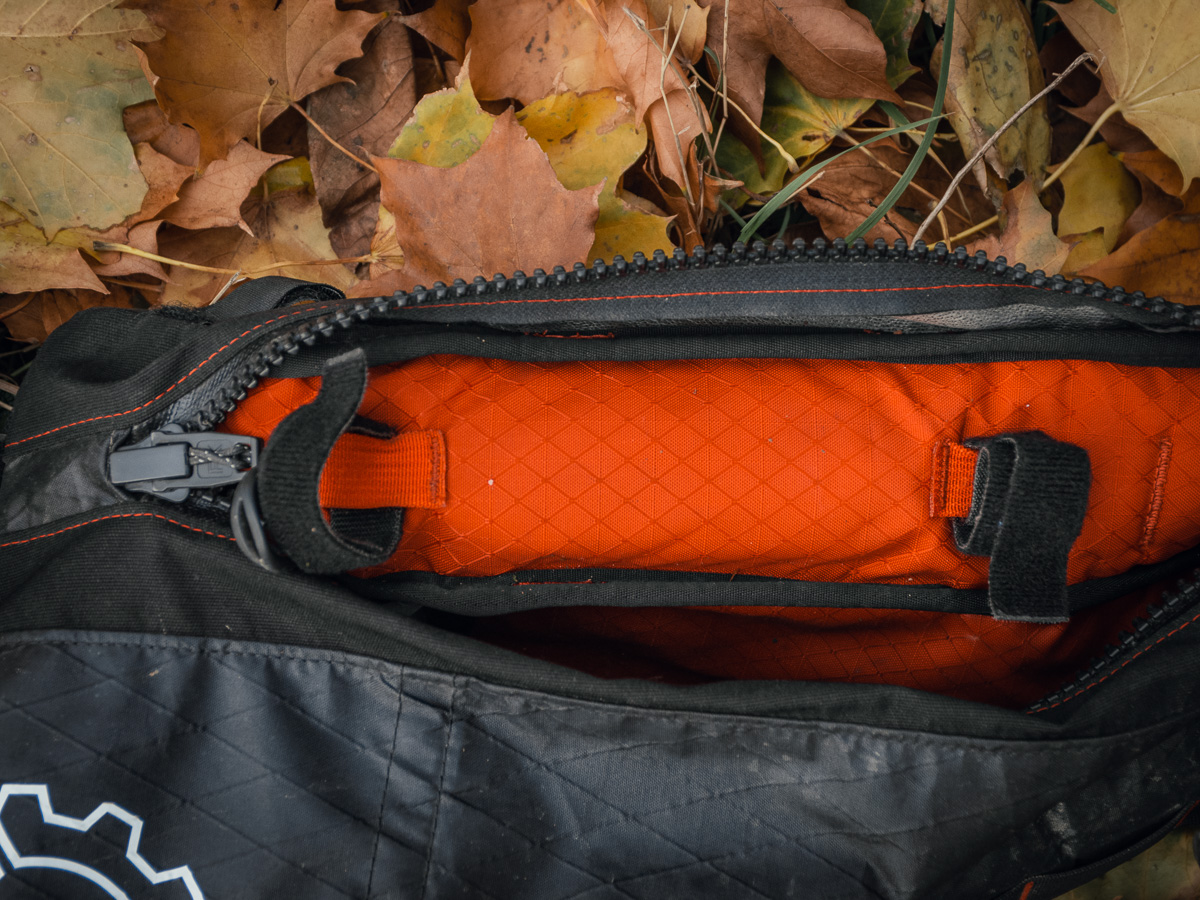
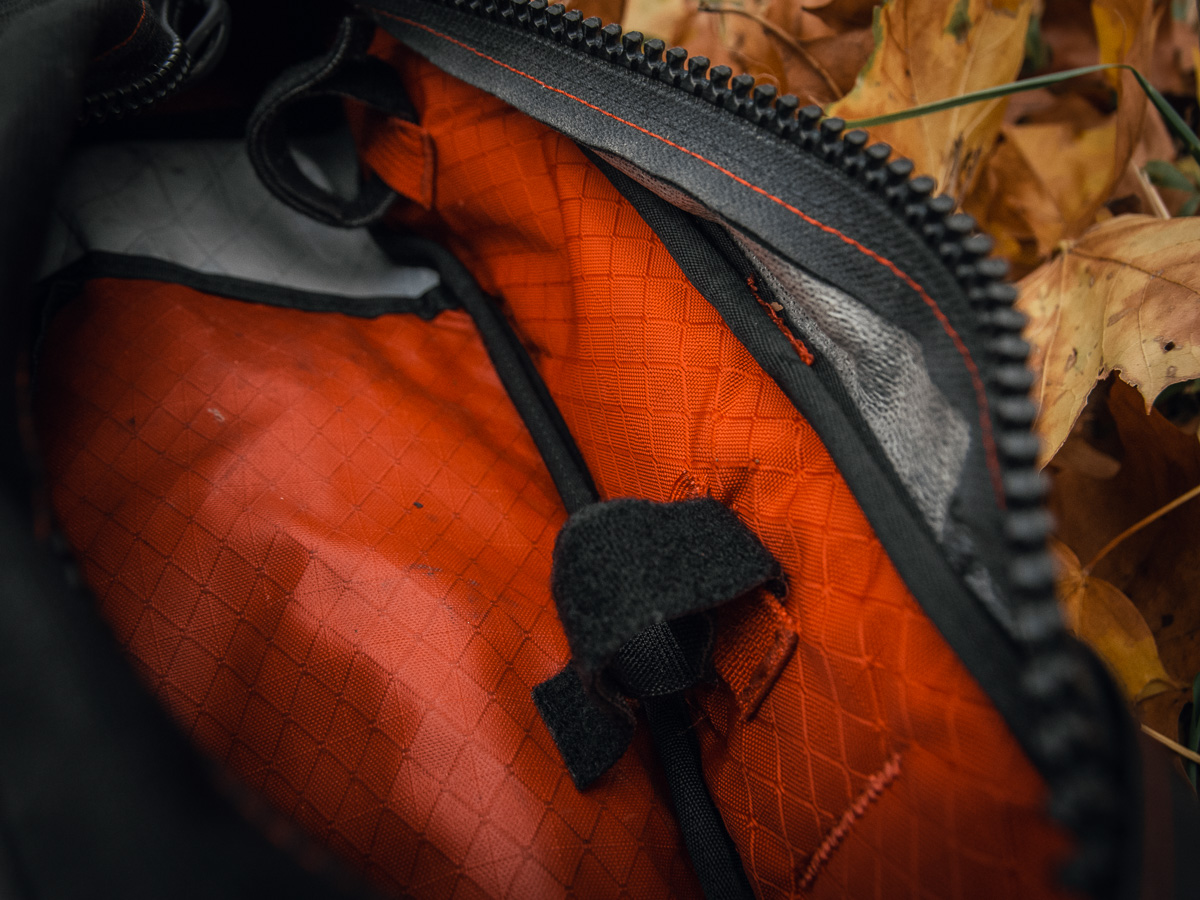
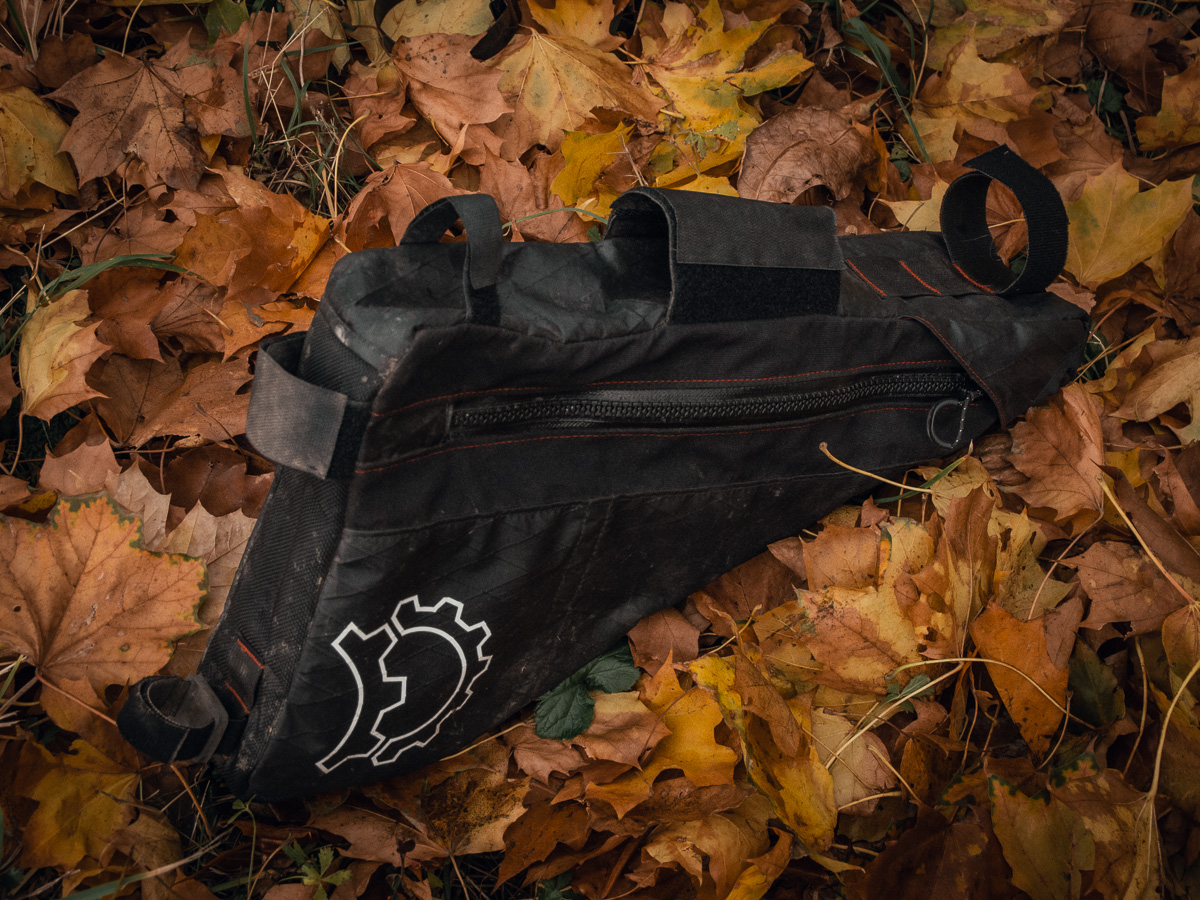
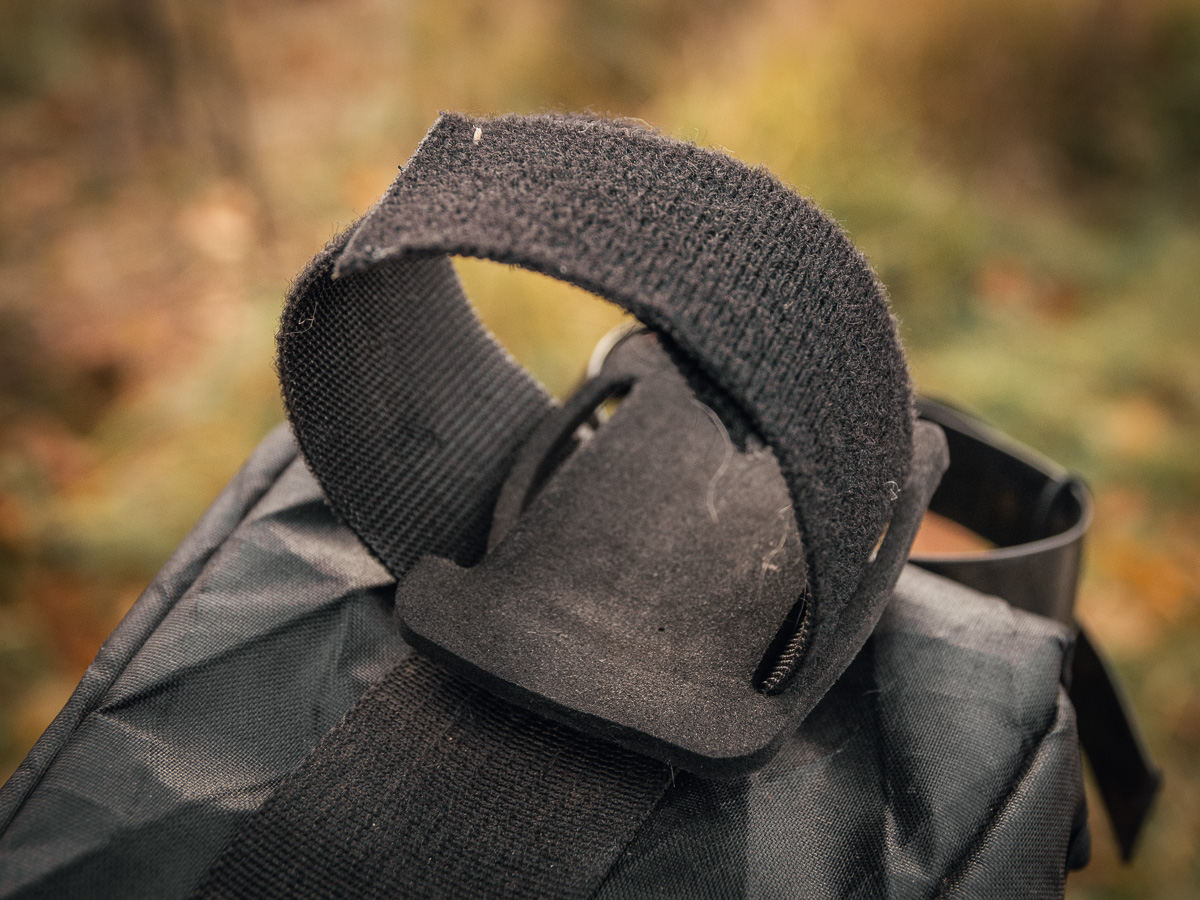
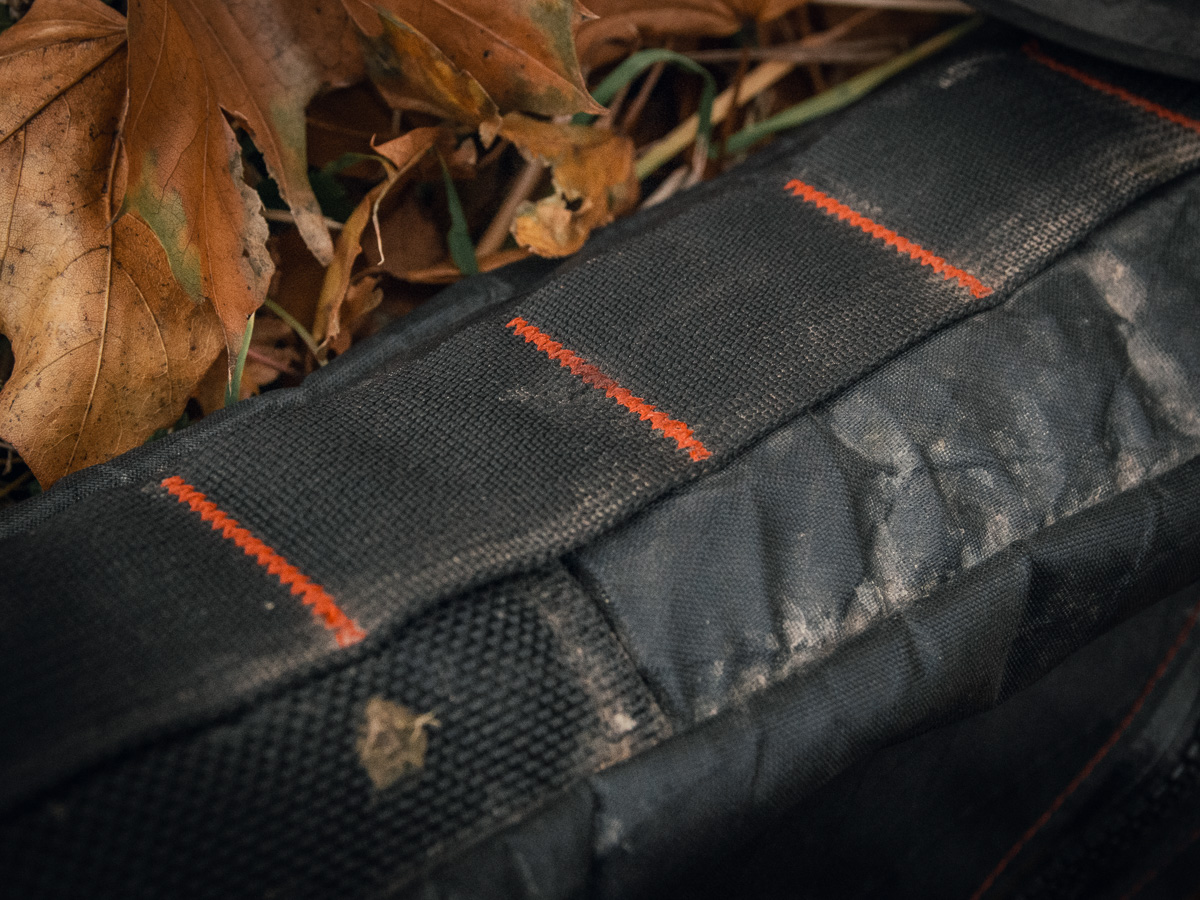
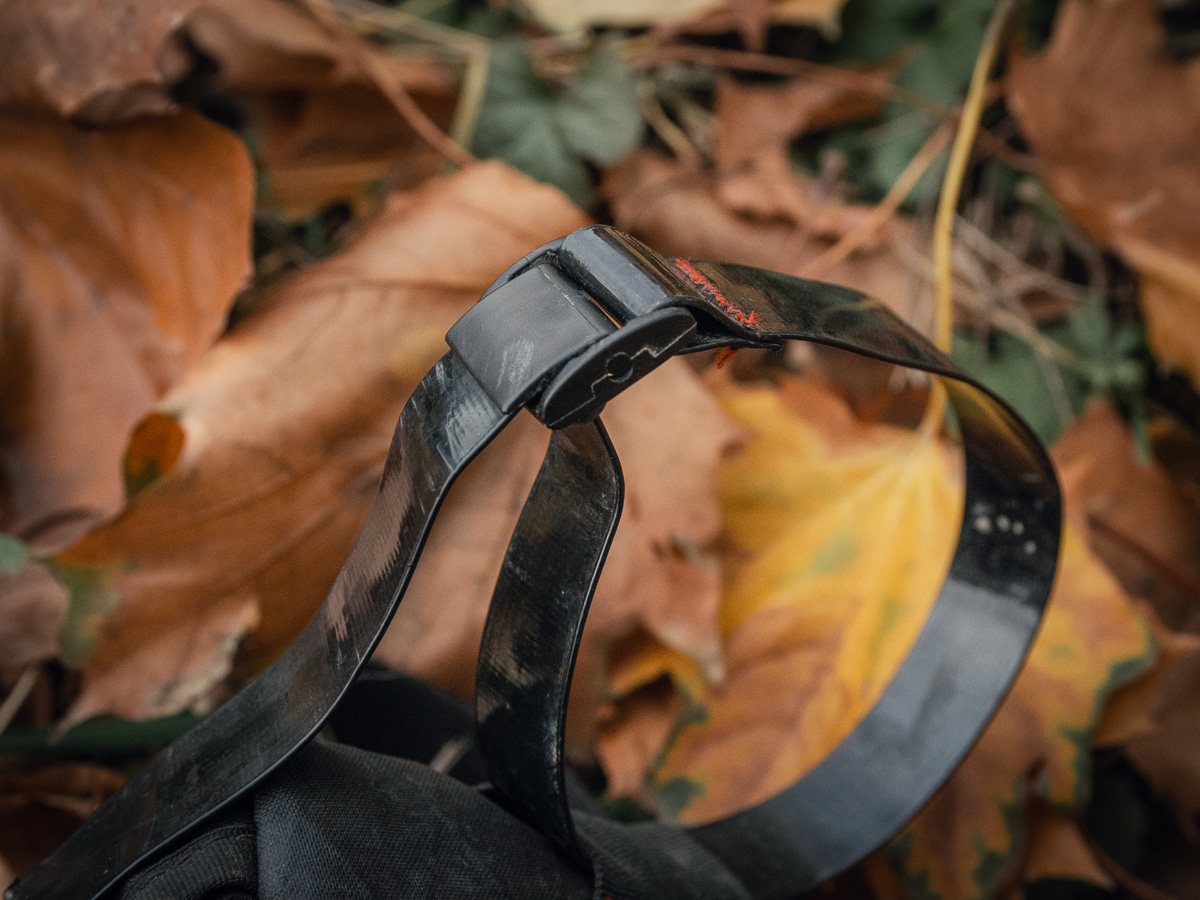
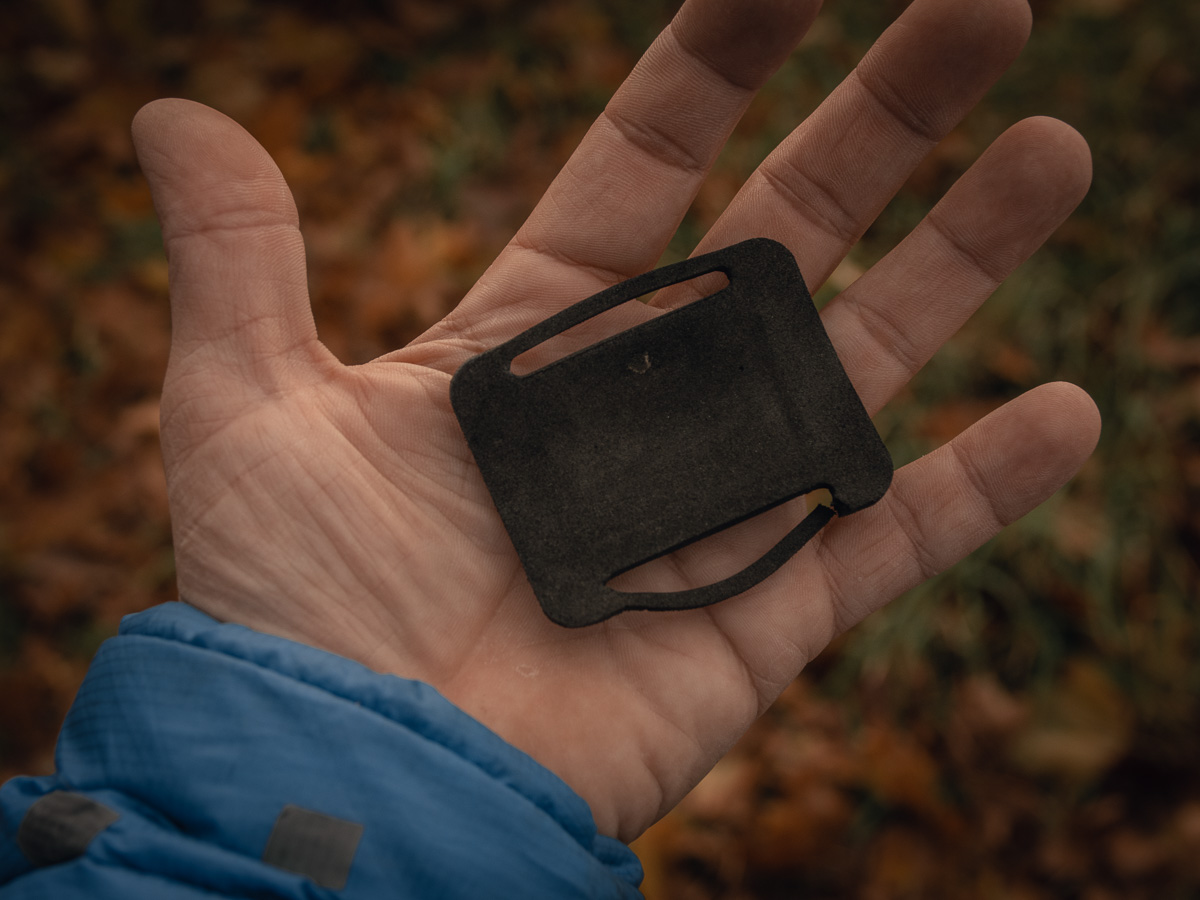
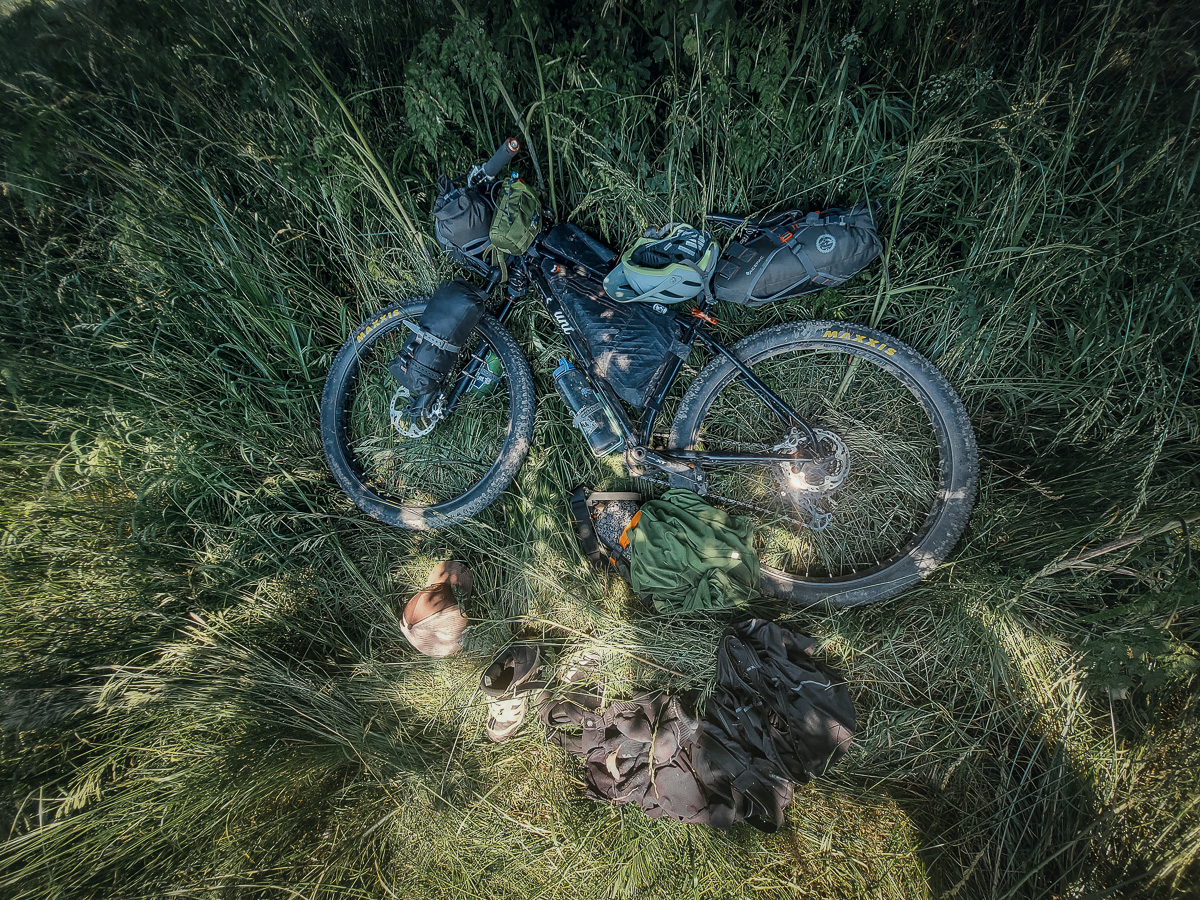
Discussion